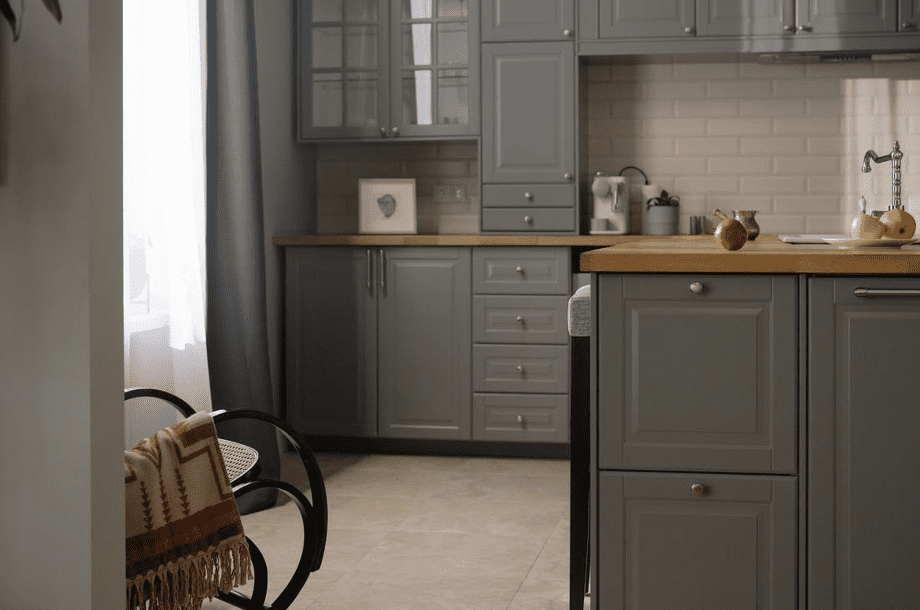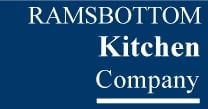Some kitchen trends were built to stand the test of time. Others, not so much. Although today’s style rules about what constitutes good taste are becoming increasingly eclectic and diverse, some design elements are less popular than they used to be.
Arguably the most obvious example comes from the sunny shades of orange, yellow and brown appearing in kitchens everywhere throughout the 1970s. Other outdated kitchen trends also include over-the-top Tuscan styling, raw, unvarnished knotty pine (a nightmare to keep free from marks and stains) and avocado colour schemes.
One or two styles of kitchen have held up especially well over the years: namely functional designs in neutral tones such as industrial chic or streamlined, modern designs. Out of all of them, the Shaker kitchen is one of the most popular. But what is a Shaker kitchen – and where did the style originate?
Where Did the Shaker Style Come From?
Although the Shaker style is rooted in 16th Century Quakerism, it took until the 1860s for it to begin appearing in kitchens. While the origins of this particular style tend to go unnoticed by the majority of modern kitchen owners, the design itself retains many of the guiding principles of the Shaker aesthetic.
The Shakers favoured balance, utility, simplicity and modest styling : anything considered too ostentatious or overly decorative was considered to be both a symbol of arrogance and a distraction from their religious duties. They also prized quality craftsmanship, believing this to have spiritual significance.
The Shaker Style Kitchen
In the world of kitchen design, Shaker kitchens embody these key principles using a clean, understated aesthetic. Traditional Shaker kitchens typically include the following elements:
● Balanced, symmetrical styling with sturdy square frames.
● Warm, inviting and natural wood materials.
● Calming neutral or monochromatic tones: if colour is used at all, it typically tends to be matte stains in muted shades such as sage green or cornflower blue.
● Minimal decorative (yet functional) elements such as wooden shaker peg rails and plain wooden cabinet knobs.
● Shaker-style furnishings such as rocking chairs and ladder-back dining chairs.
● Light, airy and luminous design (considered spiritually important by the Shakers).
Shaker Cabinetry
A key feature of Shaker kitchens is the use of hardwearing cabinetry featuring a recessed panel profile, which can be split into one or more sections known as mid-rails or feature cockbeading: thin moulding around the edge of the door to create a slight shadow.
The basic construction of a Shaker cabinet can be done in one of two ways: the first is in-frame, where two doors are positioned together above a bigger cabinet recess with a middle frame. While sturdy in design, this tends to create shallow drawers – so keep this in mind if you are looking to maximise storage space.
The second is frameless cabinetry, which (while slightly less sturdy) tends to be more spacious. Although Shaker cabinetry is traditionally fashioned from maple, cherry wood or pine, modern versions now include more sustainable options such as birchwood or oak.
Versatile Style
This style of kitchen works effectively in any number of different kitchen layouts, whether U-shaped, L-shaped, galley-style or constructed around a kitchen island. Combining freestanding and integrated elements can also add visual flair – especially in period kitchens where this was a traditional feature.
In keeping with its functional aesthetic, the use of clever cabinetry can be applied to smaller kitchens, allowing users to economise on space through integrated appliances, dedicated hidden compartments and other storage-saving features to help to open up the space and keep things bright and breezy.
Movers and Shakers
Shaker kitchens are both stylish, simple and practical – making them one of the enduring champions of kitchen design. For many, a new kitchen is a major commitment: one not likely to be changed for a number of years – which makes choosing a timeless, adaptable style all the more important.
This is especially so for those who are thinking of moving house: high quality, timeless design can help to add value to a home – whereas a dated, overly-fussy or impractical styling can quickly put off potential buyers.
Going Against the Grain
Thanks to its simple format, some Shaker kitchens in recent years have moved away from traditional Shaker styling, instead opting to add a contemporary twist to its traditional styling elements. Ways to customise a Shaker kitchen might include:
● Decorative hardware
● Stylish artwork and ornaments
● Modern tiling, such as subway tiles
● Bold, colourful wallpaper or paint in a range of finishes
● Complimentary upholstery
● Window treatments
● Contrasting fixtures and fittings
● Contemporary lighting
● Open shelving
● A variety of flooring styles
● Durable and stylish countertops in a range of materials
While this shift from sparse minimalism towards something more decorative is something the original Shakers might not have taken to, it’s still testament to the sheer versatility and functionality of Shaker design.
Only truly timeless styles of kitchen have the capacity to be this adaptable – and with their unique blend of form, function and simple charm, Shaker style kitchens continue to be a hugely popular choice.
Whether your own personal tastes are traditional, eclectic, contemporary or even a mix of different styles, Shaker style kitchens have a simple, enduring quality to them that will outlast trends year on year.
Contact Us About Your New Shaker Kitchen
To discover more about them, visit our showrooms today where you can speak to one of our kitchens Manchester or kitchens Bury specialists about how to design and style your dream kitchen.


0 Comments